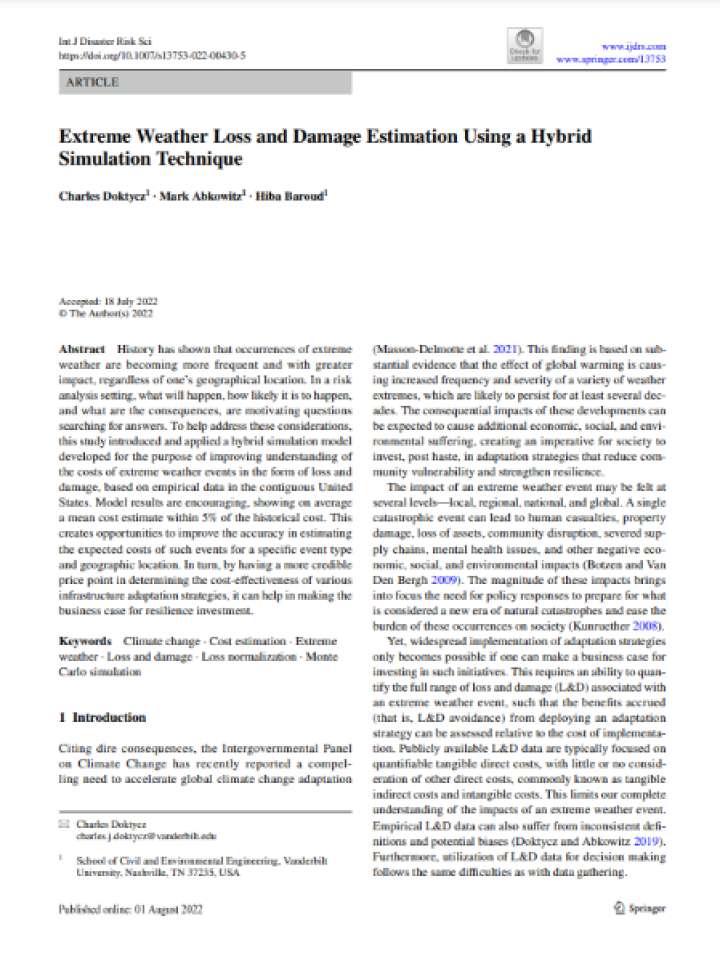Extreme weather loss and damage estimation using a hybrid simulation technique
This study aims to improve understanding of the costs of extreme weather events in the form of loss and damage by introducing and applying a hybrid simulation model based on empirical data in the contiguous United States. The model's results aim to help produce better loss and damage (L&D) data, crucial for making a business case for the widespread implementation of adaptation strategies. Publicly available L&D data are typically focused on quantifiable tangible direct costs, with little or no consideration of other direct costs, commonly known as tangible indirect costs and intangible costs. Empirical L&D data can also suffer from inconsistent definitions and potential biases. These present current limits regarding the complete understanding of the impacts of an extreme weather event.
The model results are encouraging, showing on average a mean cost estimate within 5% of the historical cost. This creates opportunities to improve the accuracy in estimating the expected costs of such events for a specific event type and geographic location. The model and methodology described herein can help guide decision making in future infrastructure adaptation investments by creating a cost comparison of inaction versus implementation of candidate risk mitigation strategies. It is based on the premise that practitioners desire to make more risk-informed investment decisions using a simple, practical framework given limited time and resources.
Explore further

